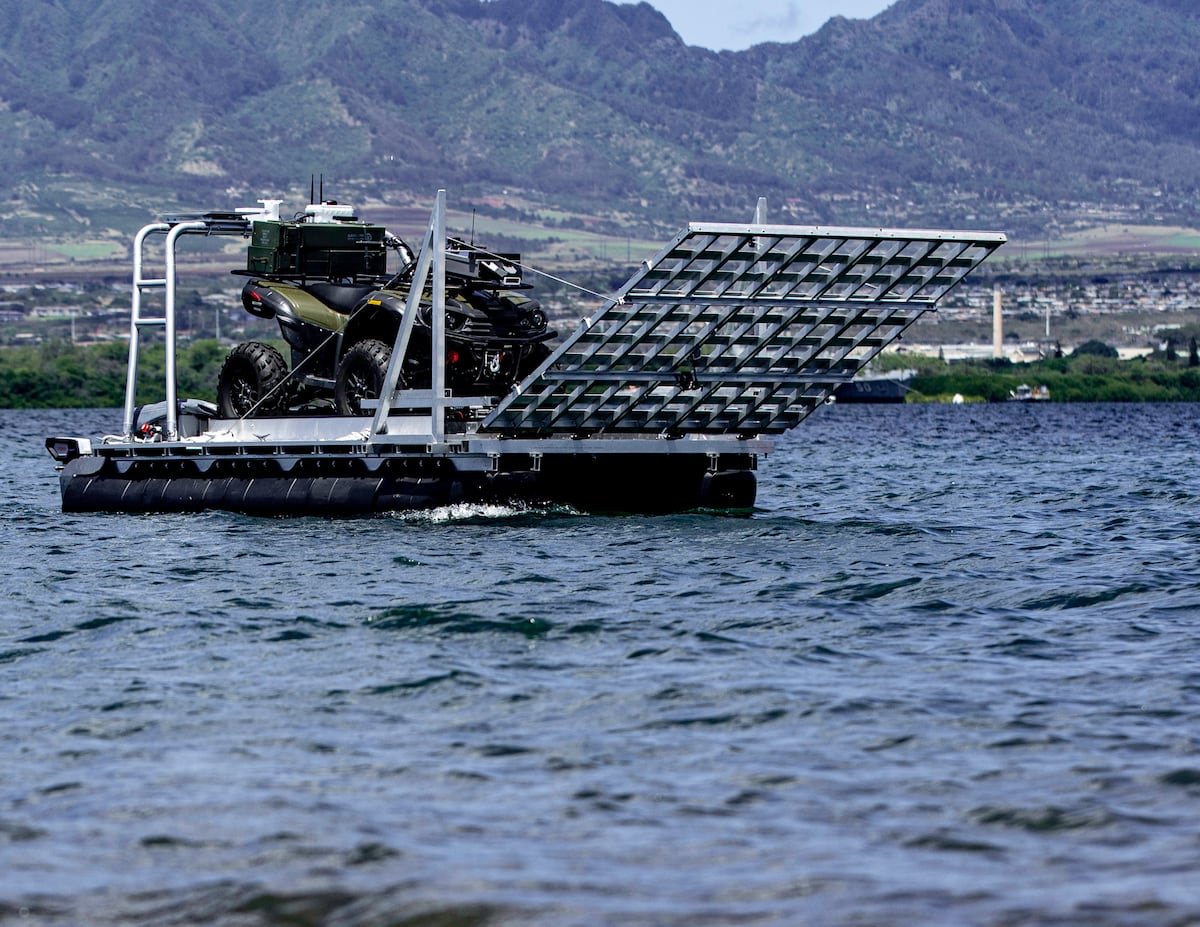


The Army’s long-awaited watercraft strategy charts a course that prioritizes sustaining an aging fleet, leveraging commercial solutions and accelerating experimentation with autonomous vessels, according to senior service leaders who helped craft it.
The new strategy, which has yet to be published publicly, takes “a much more holistic or comprehensive approach to Army watercraft,” Lt. Gen. Karl Gingrich, the Army deputy chief of staff G-8 chief, told Defense News in a recent interview.
The Army “is not going to be able to build watercraft or build ourselves out of this challenge,” Gingrich said. “The time is not there. The resources aren’t there, so … how do we sustain our current fleet and extend the life of it?”
That effort includes service-life extension programs, or SLEPs, for existing vessels. The Army has already made some investments to SLEP watercraft in fiscal 2025 and 2026 “because we knew this was coming, and we knew this was key,” Gingrich said.
The Army will buy some Maneuver Support Vessel Light, or MSV-L, landing crafts but the production numbers have scaled back to five production models. The service is being deliberate about pacing procurement, Gingrich said. When the original prototype is included in the mix, it brings the total to six ships.
“The MSV-Light is actually here in the 8th TSC right now, operating here in Hawaii, and we’re putting it through its paces with the joint force,” Maj. Gen. Gavin Gardner, the 8th Theater Sustainment Command commander, told Defense News. The vessel will participate in the Joint Pacific Multinational Readiness Center rotation in November, he said.
Even so, the Army cannot rely solely on new construction to close gaps, Gingrich said.
“We can’t build our way out of this, so the only way we’re going to be able to do it is to take a look at how do we fill the gaps in capacity and perhaps capability? How do we do that with commercial solutions, or even modified commercial solutions, where we take a commercial vessel that’s several years old, modify it for our needs, and get it out to the force.”
That approach could include soldiers operating government-owned platforms or using contracted crews, according to Gingrich.
The Army has already begun implementing key tenets of the strategy in theater, according to Gardner.
Army leadership has fully supported an effort to “leverage offshore support vessels, OSVs, which is a commercial, contracted shallow-draft watercraft, to help augment our gray-hulled boats,” Gardner said. The vessels’ cranes and “roll-on/roll-off” capabilities also allow the watercraft to access shallow-draft facilities in other countries, he added.
Contracted vessels can offer operational and perceptual benefits, according to Gardner, who described commercial vessels as “a little bit less intrusive.”
“It blends in,” he said. “And quite frankly, … it becomes a challenge for adversaries to find it and target it as well.”
The Army is also deeply interested in pursuing autonomous watercraft, viewing it as a means to transform future sustainment operations.
“We just had some experimental days out here with a couple of vendors … where we have seen what autonomous watercraft can deliver, from a perspective of not only force protection, but what really excites me, for logistics," Gardner said.
He drew a comparison to World War II–era production, when America mass-produced cargo vessels known as Liberty ships.
“But you were still putting mariners on [Liberty ships] and putting them at risk,” Gardner said. “In the future, if we can develop it appropriately,” the Army could use autonomous watercraft to “create a distribution targeting challenge for any adversary, but also ... protect the force,” he added.
Ultimately, the goal is a hybrid fleet that blends crewed and uncrewed platforms, Gardner said.
“We save Army watercraft to do delivery of combat power, while maybe autonomous vessels are delivering that routine sustainment,” he said.
As teaming with humans and robots continues to be developed across the force, “everybody wants to talk about fighter aircraft doing that,” Gardner said. “I want to do that with watercraft and its ability to sustain the Combined Joint Force. I think it’ll be hugely powerful and the Army is moving out that way.”
Jen Judson is an award-winning journalist covering land warfare for Defense News. She has also worked for Politico and Inside Defense. She holds a Master of Science degree in journalism from Boston University and a Bachelor of Arts degree from Kenyon College.

